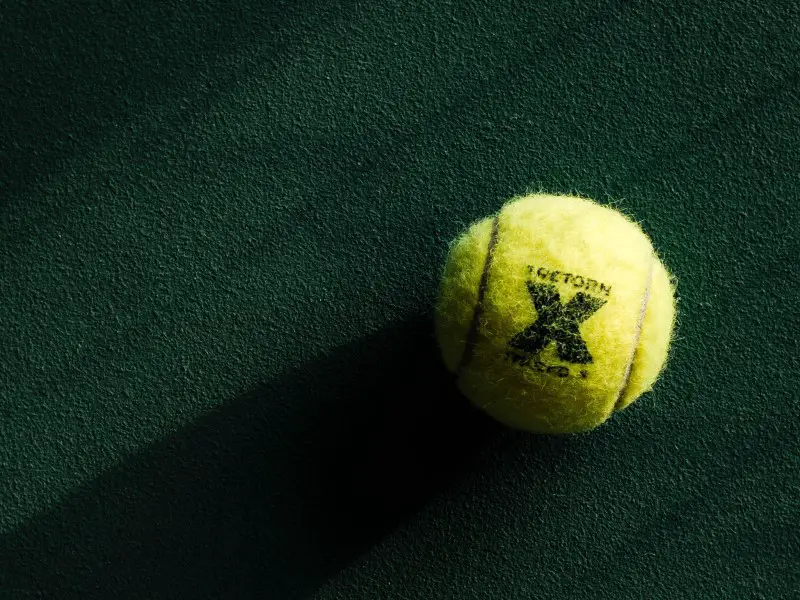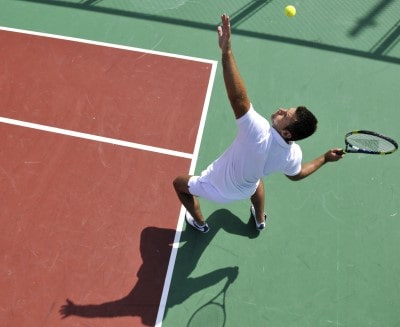When it comes to tennis, your accessories can make or break your game. And one of the accessories you must choose wisely is your tennis ball. While they all look the same, they have some distinct differences that determine your overall performance. An example of a common type of tennis ball you’ll come across is the pressureless ball.
What are pressureless tennis balls? Pressureless tennis balls, as the name suggests, are balls that don’t use internal air pressure for bounce. Instead, they have a rubber structure that gives them their bounce. When these balls are new, they don’t bounce as well as their pressurized counterparts, but the bounce gets better with time as the outer felt begins to fade.
If you’re planning to try out tennis, it’s crucial to understand the difference between pressurized and pressureless balls. Knowing how each of these balls affects your game will enable you to make the right choice and hopefully enjoy your game more. In this article, you’ll learn everything you need to know about pressureless balls.
What Are Pressureless Tennis Balls?
If you’ve been on a tennis court before, you’ve probably noticed the tennis balls with a big X mark on them. The X is Tretorn Micro-X’s sign for pressureless balls. Of course, other brands make pressureless balls, but Tretorn Micro-X balls are the most recognizable.

If your ball does not have the X mark on it, you can tell if it’s a pressurized or pressureless tennis ball by analyzing the following characteristics.
Construction
Pressurized tennis balls have a fuzzy exterior and have compressed air inside the rubber balls. The air inside the ball is what causes it to bounce. Pressureless tennis balls, on the other hand, have a solid interior and also feature a fabric-like exterior. These balls bounce due to their rubber shell structure.
Because pressureless tennis balls don’t rely on air pressure to bounce, they tend to last longer compared to their pressurized counterparts. They gain bounce over time as the felt on the exterior fades away.
Playing
The longevity of pressureless tennis balls comes with one major limitation. These balls are heavier, and some people find them harder to play compared to the pressurized balls. While you won’t feel the weight difference when you hold a pressurized ball in one hand and a pressureless one in another, the difference is evident when you’re playing.
One of the challenges people face when using pressureless tennis balls is adjusting their reaction time. Because the balls are heavy, it can be difficult to master the right speed and impact you need to get it on the other side.
Not to mention, the weight of the balls add pressure to your wrist and elbows, which can make for an uncomfortable playing experience. Nonetheless, the lifespan of pressureless balls makes them perfect for beginners, recreational play, and practice.
In contrast, pressurized tennis balls are lighter and have excellent bounce and spin right out of the can. For this reason, they are commonly used by professionals and for tournaments. But they are not as long-lasting. They last about one match to two weeks.
Pros and Cons of Pressureless Tennis Balls
Before you make a final decision between pressurized vs. pressureless tennis balls, it’s crucial to understand the advantages and disadvantages pressureless tennis balls have compared to their pressurized counterparts. This way, you’ll be able to make an informed decision.
Pros
- Cost-effective: If you want tennis balls for practice, pressureless balls are the best because they don’t wear out fast. As a result, you won’t have to invest in a new set of balls every other month due to loss of air pressure
- They don’t need vacuum-sealed canisters: Because they are pressureless, you can store them in a mesh bag or anywhere else without worrying that they’ll lose air pressure.
- They retain their bounce: Another feature that makes them excellent for practice.
Cons
- Not great for competitive use: These balls have a hard, stiff, “woody” feel that can be hard on your hand. Not to mention, it takes a while to get the hang of hitting a pressureless tennis ball compared to a pressurized one.
- Cause strain on the elbow and wrist: This is mainly because of their heaviness.
The Best Pressureless Tennis Balls
If you’ve decided that pressureless tennis balls are the best option for you. The next step is finding the best options on the market. The market is full of pressureless tennis ball brands, but they’re not all the same.
The quality varies from one company to another. But don’t fret. We scoured the internet and identified the best pressureless tennis balls for your money. These include:
1. Tourna Pressureless Tennis Ball (Pack of 60)
Several things make Tourna Pressureless Tennis Balls worth your investment.
- They’re long-lasting.
- Ideal for tennis ball machines and practice.
- Bounce stays true and is always the same.
- They have a premium felt that never goes flat.
If you’re just getting started and you need a pack of tennis balls you can rely on for regular practice, these tennis balls won’t disappoint. The fact that they have a long lifespan means you’ll be using them for a long time without worrying about wear and tear.
Some people find that the heaviness of the balls gives them better arm control and strength, which makes it easier to control regular pressurized balls. Not to mention, the balls are quite affordable, so you can buy as many packs as you need for practice.
2. Gamma Bucket-O-Balls 48
The Gamma Bucket-O-Balls is an excellent choice for the following reasons:
- You can use them on all types of courts (hard, soft, outdoor, and indoor courts).
- The balls are extremely durable. They feature heavy-duty woven felt construction.
- They retain their bounce over time.
- Excellent for all types of practice.
- They come in a convenient storage bucket.
Whether you’re a tennis coach or a beginner trying to learn the game, the Gamma Bucket-O-Balls are a great choice. These balls’ heavy-duty construction makes them perfect for different types of practice, and they can be used in a tennis ball machine. The best part is that the balls are reasonably priced so you can afford to get multiple packs if you don’t want to keep reloading your tennis ball machine.
3. Tretorn Micro-X Pressureless Tennis Balls (Bag of 72)
As mentioned earlier, Tretorn Micro-X tennis balls are commonly used and easily recognizable by the X that is featured on the yellow ball. Some of the benefits of this tennis ball include:
- Hailed as the best choice for tennis ball machines.
- Provide long-term use because they do not lose their bounce.
- High-performance micro-cell ball
- Can be used in all climates, altitudes, and courts
Tretorn Micro-X Pressureless tennis balls feature a patented micro-cell technology that allows for improved playability because of the 700 million air-filled micro cells inside of the ball. This technology is what makes the Micro-X tennis ball an amazing choice for tennis in all climates, altitudes, and courts.
Read my full article on the best tennis balls.
Make the Right Choice
At first glance, pressureless tennis balls look just like pressurized tennis balls, but they’re not. The main difference between these balls and their pressurized counterparts is their construction, which affects their speed, bounce, and weight.
Ultimately, your decision between pressurized vs. pressureless tennis balls will depend on what you plan to use the balls for. If you want practice balls, pressureless tennis balls are the best option because they last longer. But if you are a professional going into a tournament, you are better off with a pressurized ball because it is lighter, faster, and easier to control.


